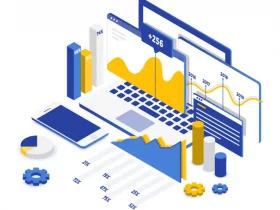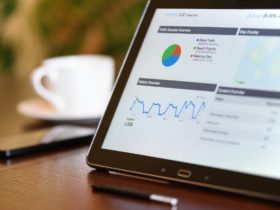Until the early 21st Century, most of the data we used in business was structured and small in size.
Business decisions were made by analyzing data using simple age-old business intelligence tools.
Books, journals, and even going to the public library were some of the ways we did research.
With the help of high-quality LLM tech, you can easily retrieve data and analyze it with a few clicks. It has transformed the way businesses operate, making them more efficient and cost-effective.
Google changed that paradigm by introducing web-based search.
Google could effectively find almost all the necessary parts we needed to analyze problems and to make successful decisions.
Then things got complicated.
Data in most traditional systems had previously been structured and easy to digest. Now, more and more of the data we work with is either semi-structured or unstructured.
Some researchers say that by as soon as 2020, more than 80% of the data we work with will be completely unstructured.
Data Analytics solves this problem.
Data Analytics organizes data with the simple design objective of finding answers that will help a business make the right evidence-backed decisions.
No longer does it make any difference whether the data is structured or unstructured.
Today, analysts and data scientists can process all the data they need in mere seconds.
By using powerful computing systems that were unheard of only a few years ago, the data can be sifted through and organized in whatever ways necessary to discover trends or correlations to help a business solve whatever problems it has.
The result is that these data-driven insights can transform a business and give it a huge competitive advantage.
What is Data Analytics?
Data analytics takes basic data and transforms it into manageable segments that a business can use to solve problems.
Whether the data is manually analyzed or done by an automated analytics application, data analysis always begins with a question and then examines the applicable data to find answers.
Every operational task and customer interaction in a business generates valuable data.
Analyzing that data can help a business make better decisions and uncover helpful insights that can be so enormously beneficial that they have the power to transform a business.
Companies that embrace data analytics not have the ability to outperform their competition but to continually exceed expectations.
Data analytics helps them drive business decisions, from operations, marketing, and even the products they create.
Every aspect of a business will show benefits.
The potential of your data can now go beyond simply making good business decisions. You can find insights about your business or customers that can actually reshape your approach and potentially lead to tremendous growth.
Organizations that were born in the digital age were built around their IT platforms.
All their business processes are IT-driven and powered by the data they have carefully collected.
Every decision and every action they make is based on how they process their customer and user data sets.
However, not all organizations were born digital.
Most traditional organizations will have various degrees of IT sophistication, but the question is, how can they transform themselves into a totally digitized business organization?
The answer is through data analytics.
Analyzing Your Data
But data analytics is worthless until it is processed, analyzed, and is capable of answering your questions. In today’s world, every business has access to data. To have a competitive advantage, companies must be able to turn their data-driven insights into ideas and decisions. These can transform their business and drive their future growth.
- The first step in implementing data analytics into your business is to set a clear business objective. Once you have established your goals, it will be a lot easier to understand and ask the questions you will need to use the data to find answers.
- The second step is that once you know your objective, and what you want to discover, look in your technology applications to find the best available data and metrics to analyze. You should already be collecting transactional data, so it’s now time to put it to use.
- The third step is to use a tool to analyze your data. Historically this was done with a highly-trained statistics analyst. But today, technology has changed the rules of the game. Now, every business, no matter how big it is, has the ability to get concrete answers from their data. If your business doesn’t have an IT team, use a self-service analytics tool that’s specially designed to go through your data and find answers to your questions.
- The fourth step requires you to make a decision based on the data analysis. By this time, you should have all the information you need to make a decision or take corrective action. Your ability to interpret the resulting data, and act properly on the insights, will be key to setting you apart from the competition.
Interpreting Your Analysis
There are three basic questions you should ask yourself in interpreting your analysis of the data you’ve created.
- Is the conclusion complete enough to answer your questions?
- Are all objections covered?
- Does the analysis give you enough insights to make tangible changes in your business?
Digital organizations are much more agile than ones that continue to be traditional. They are always testing innovations in real-life conditions and crunching data so they can stay ahead of the game.
Once a feature is complete, they go and live with it to measure how effective it is.
If it doesn’t yield the results they expect, they pull back and revert to a previous version, remove the option they changed, and try something else.
The key in today’s business world is not to always get things 100% right, but to fail quickly, and then be able to change course so you can always stay ahead of the game.












